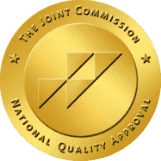Trauma Informed Care and Addiction
- Home
- Trauma Informed Care and Addiction
What is Trauma Informed Care?
Trauma informed care, developed by Dr. Robert Anda and Dr. Vincent Felitti, is a form of holistic healthcare. Trauma informed care is based on the high likelihood that a patient has experienced a traumatic event at some point in their lives.
Definition: Trauma informed care is a patient-centric medical outlook for dealing with potential trauma history and avoidance of traumatic relapses. Trauma informed care is not used to treat a specific type of trauma but to treat patients who have undergone any traumatic event.
6 Main Principles of Trauma Informed Care
Safety
Trustworthiness
Collaborative
Peer
Empowerment
Culture/Gender
This principle implies medical consideration of a patient’s culture or gender in terms of both treatment and patient receptiveness to treatment. This can include historical trauma, personal trauma, and further cultivating an environment in which the patient feels safe. This principle also suggests due consideration of personal bias and perception on the part of the healthcare provider.
Each of the 6 principles of Trauma informed care share a patient-first viewpoint. However, it is suggested that to achieve and maintain these principles that the organization must also apply them to all levels of staff. I.E. The staff must be treated with consideration to their safety, empowerment, etc.
Other Principles of Trauma-informed Care
Evidence Based
Trauma informed care employs an evidence-based treatment method. This means if a patient displays signs or symptoms of known conditions then the response would be the corresponding treatment for these conditions. This method shifts medical treatment options to reflect data as opposed to hunches, or instincts.
Holistic Treatment
Trauma informed care is also focused on the overall betterment of physical and mental health, regardless of condition or treatment. It encourages the viewpoint of the patient being a unit as opposed to individualized parts. It acknowledges the effects that a condition may have on other parts of the body. For example, a person with substance use disorder may consequently experience depression which in turn can lead to high blood pressure, and so on.
Types of Trauma
Trauma can occur through a variety of factors. Here are a few of the most common traumatic events
Adverse Childhood Experiences
Adverse childhood experiences or ACE include any form of abuse, loss, or physical and/or psychological injury. 1 in 6 adults has multiple ACE experiences. These experiences can differ wildly as can the perception of these experiences. It’s important to allow room for the patient to talk about their trauma.
Combat
Death or Loss
Domestic Violence
Emotional Abuse
Trauma Informed Care in Addiction Treatment
Correlation Between Trauma and Substance Use Disorder
On average, people with PTSD are 5 times more likely to need treatment for substance use disorder. The connection between the two is enough evidence to include trauma therapy and treatment to most patients in substance use recovery programs.
A PTSD diagnosis also means there is an increased risk of consuming alcohol at a much higher rate and frequency than other groups of drinkers. Often this can create a cycle of drinking to subdue PTSD-affected thoughts and feelings, which in turn builds both dependence and tolerance. Often, concurrent treatment for the two will involve therapy to teach healthy coping mechanisms.
PTSD and SUD Rates
The following are statistics for PTSD and Substance use disorder as it affects combat veterans and domestic abuse survivors:
- 46% of people with PTSD also have SUD
- 59% of all woman in SUD treatment programs also have PTSD
- The combination of PTSD and SUD affects 40% of the population
- People who have been physically abused are 12 times more likely to develop an alcohol use disorder
A majority of patients with PTSD and SUDS develop SUDS due to alcohol dependency. This is due to the wide range of people with traumatic experiences, the general social acceptance of drinking totaled with the cheapness and availability of alcohol.
Treating SUD and Trauma at the Same Time
One of the key elements of treating concurrent Trauma and SUD is psychotherapy. Here are a few of the goals for this element of treatment:
- Healthy coping mechanisms
- Improving self-image
- Change in mindset
- Letting go of certain emotional triggers when applicable
- Self-care
The second element is medical treatment to help with the symptoms of withdrawal and to help stabilize overall mood after dealing with long term substance use and/or depression. Any treatment options for concurrent trauma and SUD will integrate these two elements for effective care.
Exposure Treatment
Trauma informed care uses evidence proven treatment. In that regard, prolonged exposure treatment or PE is an effective and time-proven option for recovery. Studies have shown that PE is safe, effective, and acceptable. Exposure therapy is considered a form of CBT or cognitive behavioral therapy. Its documented use has been as a treatment for PTSD and many other traumatic events.
PE involves visualizing past trauma in a controlled, therapeutic environment and gradually escalating to replicating certain triggers. This allows you to examine and review the event in a new light and, hopefully, better cope with it.
Non-Exposure Treatment
Non-exposure therapy involves any treatment except those that would be categorized as exposure treatment. This can include therapy to treat emotional processing, develop a better understanding of the effects of trauma, and managing of self-image. Non-exposure therapy is used by medical professionals either unwilling to risk patient progress with exposure or if patients don’t exhibit a reduction in symptoms from exposure therapy. Non-exposure therapy is considered equally acceptable in most cases and is considered a form of CBT as well.
Pharmacological Treatment
Focus on Empowerment
Studies on the Effectiveness of Treating Trauma While Treating SUD
Replicating effective treatment for concurrent trauma and substance use is a complex endeavor. The literature on the effectiveness of varied social groups and environments is still being written.
However, empirical data involving women in domestic violence situations has been published. These studies show that 3 months after a PTSD and SUD program, the group had reduced signs of both conditions. Furthermore, those that completed the program were further along in their dependency than those that didn’t. This suggests that the treatment is effective for the recovery of long-term dependency.
Treatment Models for SUD and Trauma
ATRIUM
Helping Women Recover
Seeking Safety
TREM
Triad
Triad is a 16-week course to teach essential emotional skills and lessons vital for long-term recovery. It’s centered around bettering the effects of trauma, mental health, and substance abuse. Triad is considered a holistic approach due to the view that trauma can cause other conditions in separate parts of the mind and body.
What is Re-Traumatization?
Definition
Common Triggers
Traumatic triggers are nuanced and individualized. An inter-personal relationship is often required to know a patient’s specific trigger. However, are a few of the most common triggers:
- Loud Noises
- Touch without consent
- Specific songs
- Phrases
- Smells
- The place of the traumatic event
- The day of the traumatic event
- The presence or semblance of the abuser
- Colors
- Unbridled negative thought
Practices to Avoid Re-Traumatization
Here are some best practices to avoid re-traumatization from a patient perspective.
- Identify and recognize triggers
- Build a routine
- Strengthen coping mechanisms
- Study how trauma changes the brain
Here are some best practices to avoid re-traumatization from a healthcare provider perspective.
- Build a rapport with a patient
- Explain the impact of trauma
- Maintain an open communication
- Consider and respond to patient remarks
- Positive reinforcement
How Should Addiction Treatment Address Trauma in Treatment?
Policies and Procedures
Focuses and Aspirations
- https://wp.nyu.edu/steinhardt-appsych_opus/addressing-trauma-in-substance-abuse-treatment/
- https://www.samhsa.gov/sites/default/files/wcdvs-article.pdf
- http://socialwork.buffalo.edu/social-research/institutes-centers/institute-on-trauma-and-trauma-informed-care/what-is-trauma-informed-care.html
- https://www.hazeldenbettyford.org/education/bcr/addiction-research/trauma-informed-care-ru-118
- https://www.researchgate.net/publication/13734072_The_Addiction_Severity_Index_as_a_screen_for_trauma_and_posttraumatic_stress_disorder
- https://www.researchgate.net/publication/13595419_Seeking_Safety_Outcome_of_a_New_Cognitive- Behavioral_Psychotherapy_for_Women_with_Posttraumatic_Stress_Disorder_and_Substance_Dependence
- https://www.researchgate.net/publication/10997056_The_Trauma_Recovery_and_Empowerment_Model_TREM_Conceptual_and_Practical_Issues_in_a_Group_Intervention_for_Women
- https://www.nasmhpd.org/sites/default/files/SAMHSA_Concept_of_Trauma_and_Guidance.pdf
Iris Healing® strives to be diligent and prompt in updating the information available on our website. Please note, however, that our treatment modalities and protocols are subject to change at any time. For the most up-to-date details regarding our treatment offerings or other protocols, please contact us: (844)663-4747







